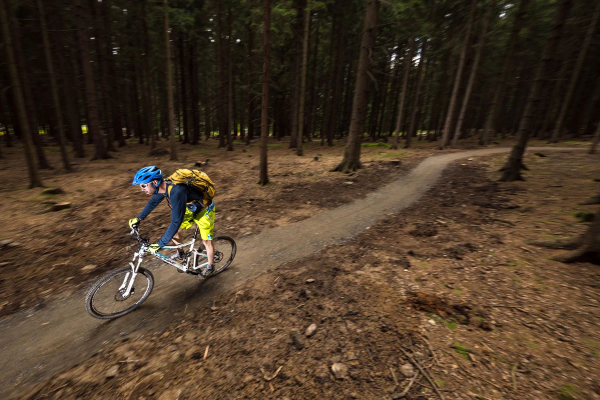Mountain biking is a thrilling sport. It combines adventure, skill, and physical endurance. One crucial aspect of mountain biking is understanding the terrain. In particular, the steepness of a trail can greatly impact your ride. This article will delve into what constitutes a steep grade for mountain biking, why it matters, and how to tackle these challenging terrains effectively.
Understanding Trail Grades
What Is Trail Grade?
Trail grade, or gradient, refers to the slope of the trail. It is typically expressed as a percentage. For instance, a 10% grade means the trail rises 10 feet for every 100 feet of horizontal distance.
Why Trail Grade Matters
The grade of a trail affects your ride in several ways:
- Difficulty Level: Steeper grades are more challenging to ride.
- Speed: Steeper descents can increase speed, requiring better control.
- Safety: Knowing the grade helps in planning and managing risks.
Defining Steep Grades
General Guidelines
In mountain biking, a steep grade generally refers to anything above 10-15%. However, this can vary depending on the rider’s experience and the specific trail conditions.
Beginners vs Experienced Riders
- Beginners: For beginners, a grade above 10% can feel steep.
- Experienced Riders: Seasoned bikers might consider grades above 15-20% to be steep.
Measuring Trail Grade
Using a Clinometer
A clinometer is a tool that measures the angle of slope. It’s handy for bikers to assess trail steepness.
Digital Apps and GPS Devices
Many modern GPS devices and apps can measure trail grade. These tools can provide real-time data on the slope.
Impact of Steep Grades on Riding
Physical Demands
Steep grades require more physical effort. Climbing steep trails demands strong leg muscles and cardiovascular endurance.
Technical Skills
Navigating steep grades, especially descents, requires advanced technical skills. Riders need to master braking, balance, and maneuvering.
Mental Preparedness
Riding steep grades can be intimidating. Mental toughness and confidence play crucial roles in tackling these challenges.
Preparing for Steep Grades
Fitness Training
- Leg Strength: Exercises like squats and lunges can build leg strength.
- Cardio: Activities like running and cycling improve cardiovascular endurance.
- Core Stability: A strong core helps maintain balance on steep trails.
Technical Training
- Braking Techniques: Learn how to use both front and rear brakes effectively.
- Balance: Practice balance exercises and riding narrow trails.
- Bike Handling: Work on maneuvering your bike in tight spaces and over obstacles.
Bike Setup for Steep Grades
Gearing
Lower gears are crucial for climbing steep grades. Ensure your bike has a wide range of gears.
Brakes
Powerful, reliable brakes are essential for controlling speed on steep descents. Hydraulic disc brakes are a popular choice.
Suspension
Good suspension can absorb shocks and provide a smoother ride on rough, steep trails.
Techniques for Riding Steep Grades
Climbing Techniques
- Steady Pace: Maintain a consistent, steady pace.
- Body Position: Lean forward to keep the front wheel down.
- Cadence: Pedal at a high cadence to reduce muscle fatigue.
Descending Techniques
- Controlled Braking: Use both brakes to control speed without skidding.
- Body Position: Shift your weight back to prevent going over the handlebars.
- Look Ahead: Keep your eyes on the trail ahead to anticipate obstacles.
Common Challenges and Solutions
Losing Traction
Steep grades can lead to losing traction. To combat this:
- Lower Tire Pressure: Provides better grip.
- Weight Distribution: Keep your weight balanced over the wheels.
Overheating Brakes
Long, steep descents can cause brakes to overheat. Prevent this by:
- Using Both Brakes: Alternately to prevent overheating.
- Taking Breaks: Pause during the descent to let brakes cool down.
Safety Tips for Steep Grades
Wear Protective Gear
Always wear a helmet, gloves, and knee and elbow pads. Consider a full-face helmet for very steep or technical trails.
Ride with a Buddy
Having a companion can be crucial in case of an emergency.
Know Your Limits
Don’t push beyond your skill level. It’s better to walk a section of the trail than risk injury.
See Also: Is Mountaineering a Sport
Trail Etiquette on Steep Grades
Yield to Uphill Riders
If you’re descending, yield to riders climbing uphill.
Stay on Marked Trails
Avoid creating new paths or shortcuts. This helps preserve the environment and keeps trails safe.
Communicate
Let other riders know your intentions. A simple shout of “rider up” or “rider down” can prevent collisions.
Notable Trails with Steep Grades
North America
- Moab, Utah: Known for its technical and steep trails.
- Whistler, Canada: Offers a range of steep descents for experienced riders.
Europe
- Alps, France: Famous for challenging mountain biking trails.
- Lake District, UK: Offers steep, technical trails amidst stunning scenery.
Personal Stories and Experiences
Rider Testimonials
Hearing from other riders can provide insights and tips. Many bikers share their experiences on forums and blogs.
Learning from Experts
Consider taking a mountain biking course. Learning from experienced riders can enhance your skills and confidence.
Conclusion
Understanding and mastering steep grades is crucial for mountain biking. It requires a combination of physical fitness, technical skills, and mental toughness. By preparing adequately and following the right techniques, you can enjoy the thrill of tackling steep trails safely and confidently.

